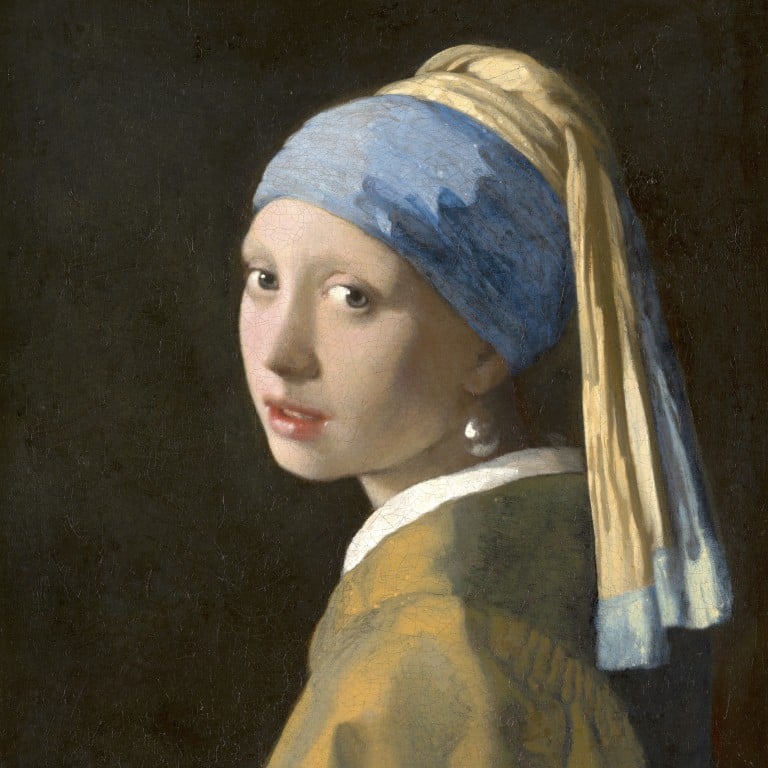
Vermeer exhibition featuring Girl with a Pearl Earring is first – and probably last – time so many of the Dutch painter’s works can be seen together
- An exhibition at Amsterdam’s Rijksmuseum features 28 works by Johannes Vermeer, including Girl with a Pearl Earring; popularised by Scarlett Johansson film
- It’s the first time so many of the 17th century Dutch artist’s works have been in one place; demand is high to see what may be the last Vermeer show of its size
For a blockbuster exhibition, “Vermeer”, which opened at Amsterdam’s Rijksmuseum on February 10, is surprisingly small.
Seventy per cent of the Dutch master’s known works are on display, but this still amounts to just 28 paintings, making the exhibition digestible and approachable, much like the paintings themselves.
“Vermeer” is an art exhibition as much for people who don’t usually go to galleries as for those who do.
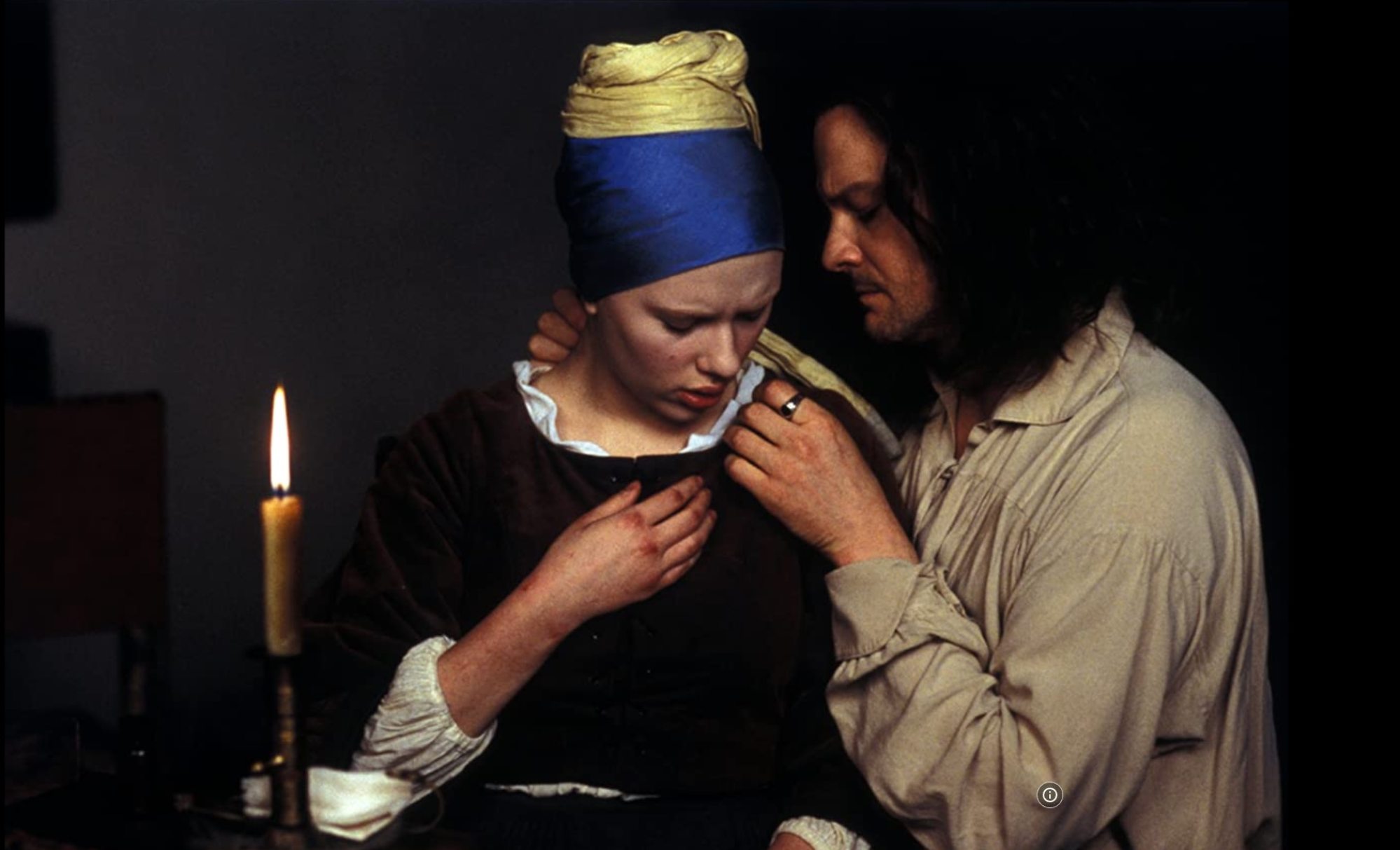
The young woman in a blue-and-yellow turban gazes out at the viewer with a frankness that some commentators regarded as immoral.
Among art aficionados, demand for tickets has been driven by the consideration that there are more Vermeers here than even the artist ever saw together, and that so many will probably never be together in one place again.

Three key paintings were only free to travel from New York because the Frick Museum is currently closed for renovation. Johannes Vermeer lived from 1632 to 1675, and several of nine remaining works are unavailable because at 350 years old they are too delicate to travel. This will probably become true of more of them as time goes by.
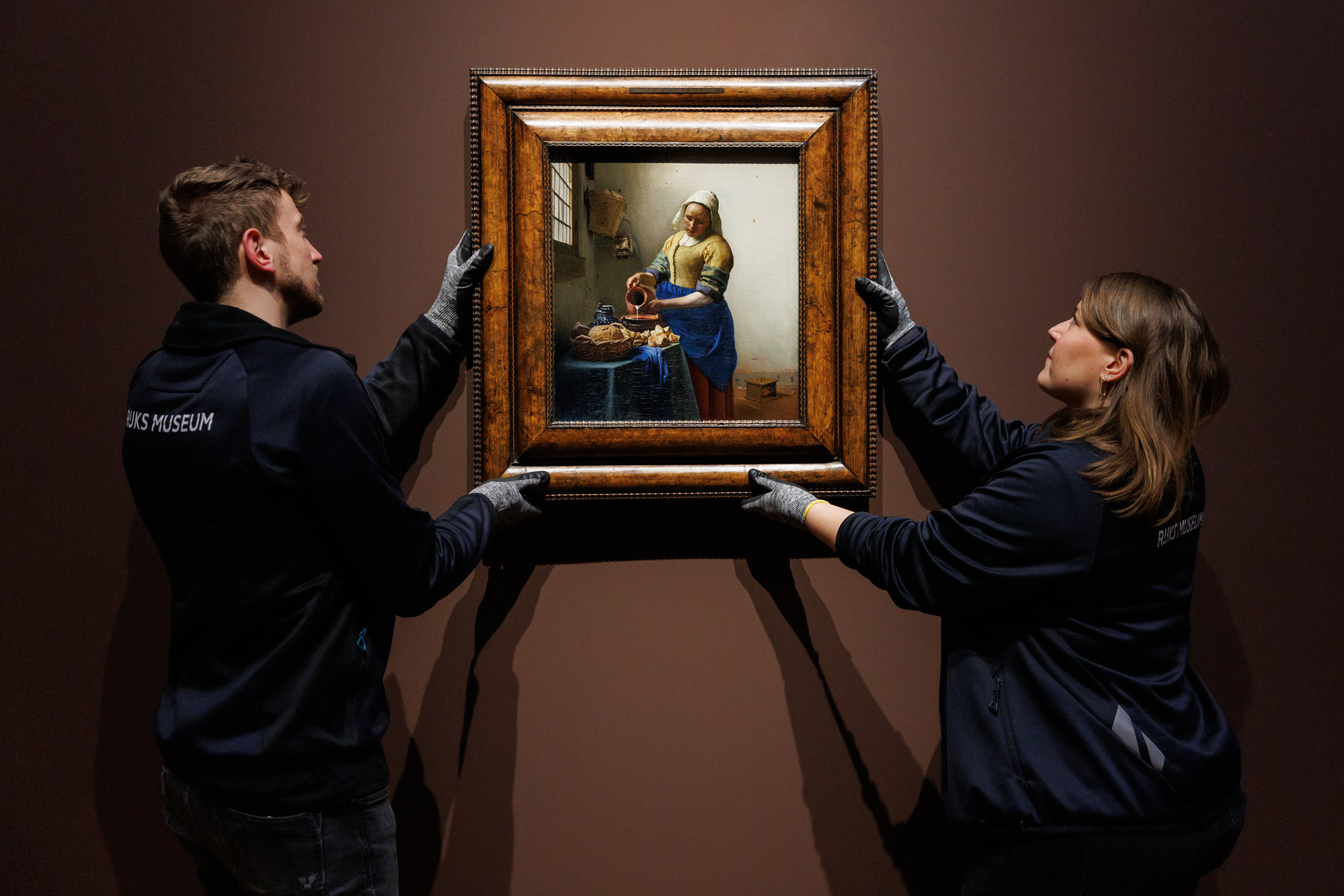
Inside, the paintings are generously spaced and perfectly lit, and the well-policed timed entry system means there’s little of the pushing associated with big shows, and instead plenty of opportunity for extended contemplation.
While the works on show feature religious subjects and views of Vermeer’s hometown of Delft (in the west of the Netherlands), perhaps the most relatable of the artist’s works are those depicting domestic life.
These include women reading, writing or receiving letters; playing keyboard instruments or pouring milk, in interior settings.
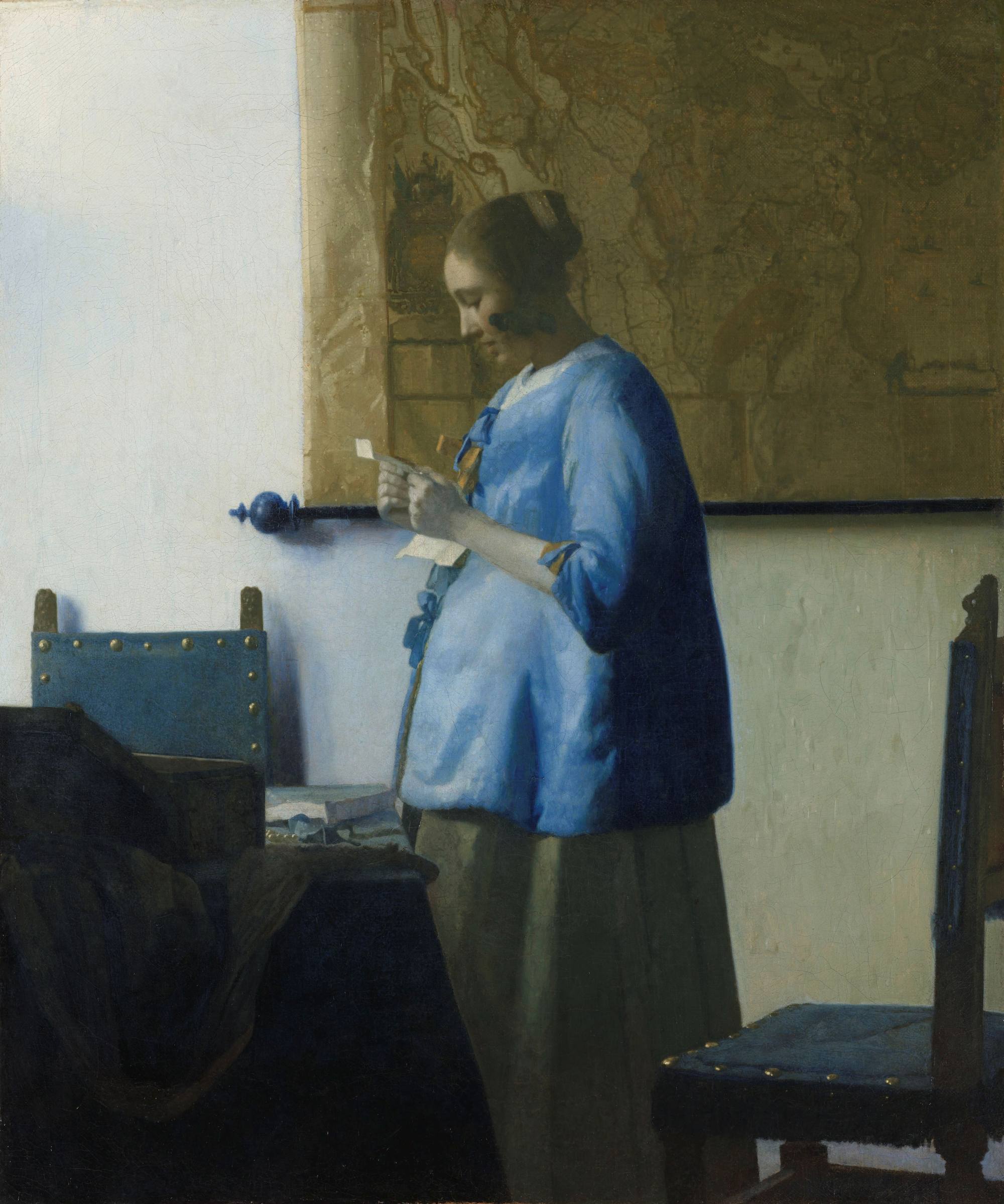
These paintings instantly bridge the gap in time and place between subject and viewer.
The pictures often seem to have their own internal glow - an appeal drawing the viewer in, and created by Vermeer’s mastery of light. In many cases pours in from windows on the left, and is picked up in tiny dots of white on fabrics and furnishings.
Some of his interiors are glamorous, but in others he has gone out of his way to depict the trivial in astonishing detail – detritus on floors, the chipped plaster of the kitchen in The Milkmaid (1658), or the individual bristles of a broom in The Love Letter (1670).

There’s also a lot going on beneath the surface, even in the case of Girl with a Pearl Earring. The “pearl” is indicated only by two small daubs of white, one apparently reflecting a light source and the other the girl’s white collar.
But it is improbable, given its size, that the earring was even a pearl, and close up the look is metallic, perhaps a more credible disc of silver or pewter.
It could also be simply a product of the painter’s imagination; his talent for painting pearls is evident in many other pictures in the show. And besides, this is, after all, a tronie – a type of portrait popular at the time in which the subject was embellished or exaggerated.
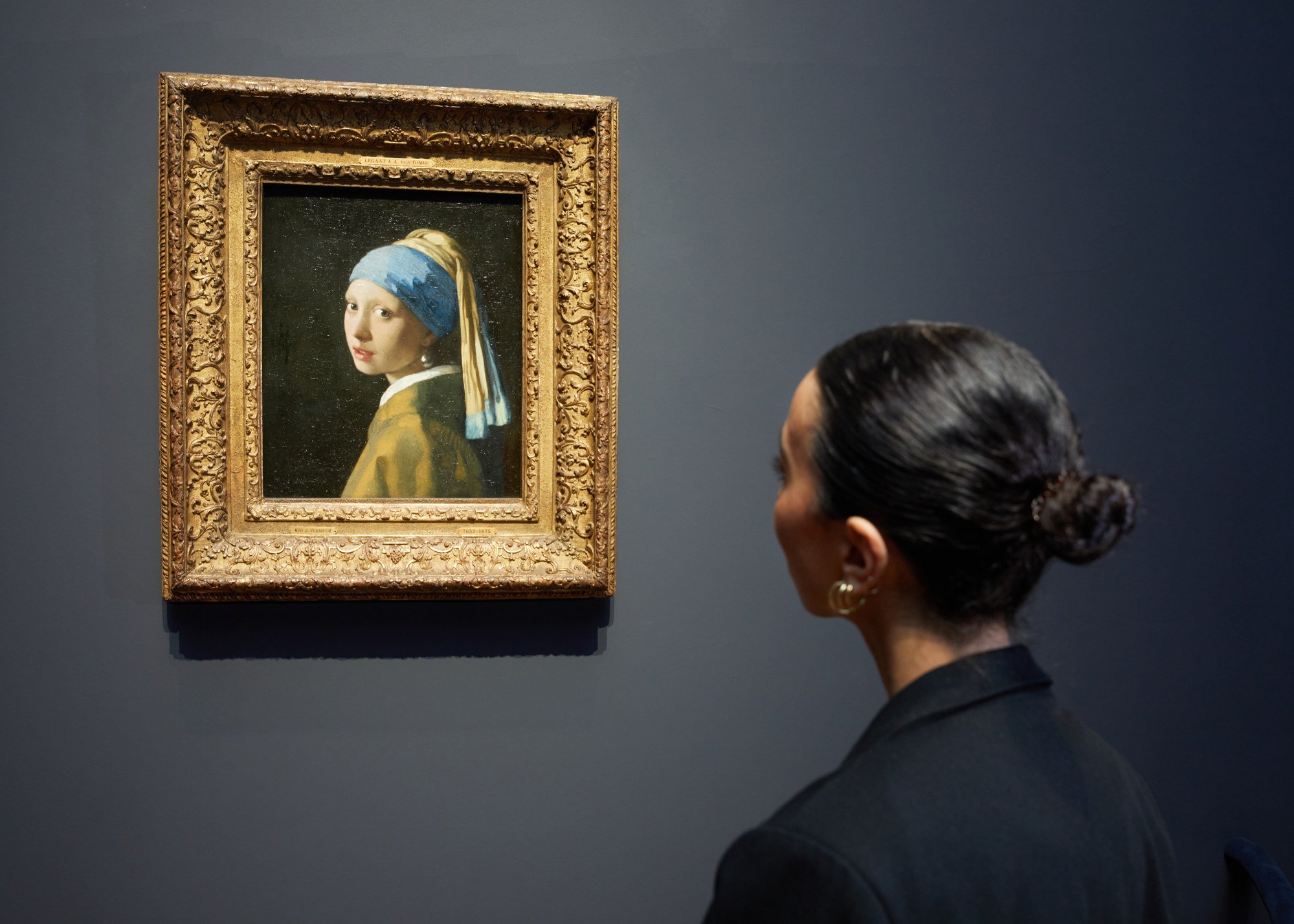
Vermeer, who rarely left Delft, shared a small house with 15 children, 11 of whom were still alive at the time of his death, and he likely never knew the calm seen in his paintings.
Little known in his lifetime, his appeal today is such that tickets to the exhibition sold out rapidly, and the shortage is leading to online offers of substantial premiums to those prepared to part with what they have.

The hours have already been extended once, and a further announcement about fresh tickets is expected on March 6.
Even as recently as 1881, Girl with a Pearl Earring was sold for a mere two guilders plus 30 cents buyer’s premium. In today’s money, that’s still less than the €30 (US$32) official ticket price.

